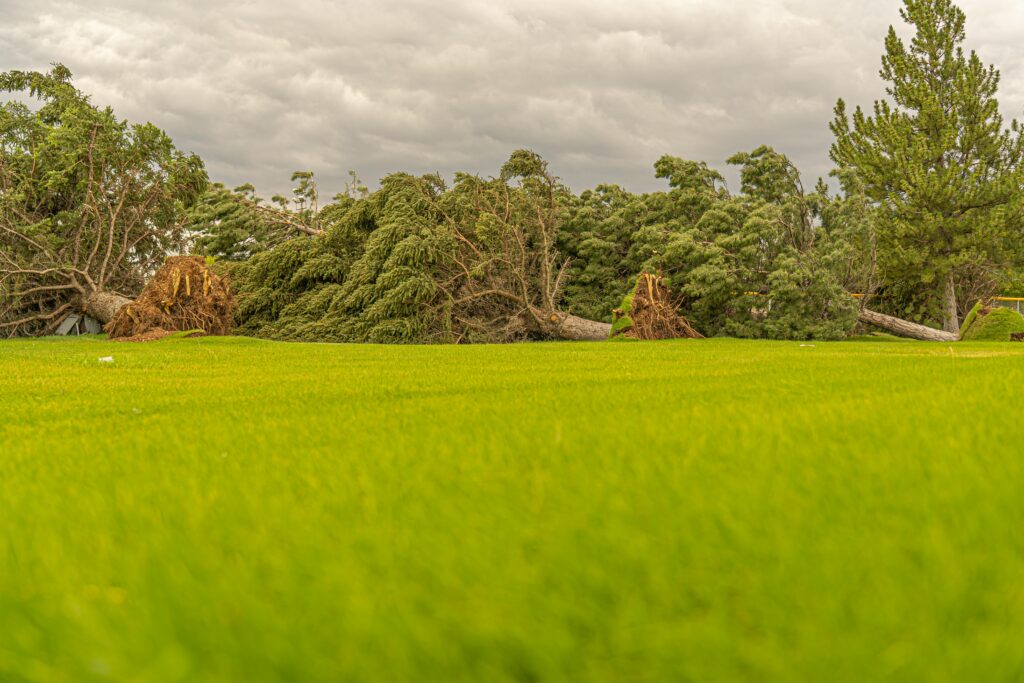Severe storms have caused widespread damage across the southern and midwestern United States. More than 30 people have died, with twelve of them from Missouri. Thousands of homes are without power, and more extreme weather is on the way.
Destruction and Wildfires
The storms, which began over the weekend, were fierce. They brought heavy rain, hail, and powerful tornadoes. Missouri was one of the hardest-hit states. In this state, twelve people have died. The tornadoes destroyed homes, uprooted trees, and sent cars flying. Entire neighborhoods were wiped out.
The storms also made wildfires worse. In Oklahoma, fires burned through more than 170,000 hectares of land. This area is larger than the city of Vienna. The strong winds from the storm helped spread the fires quickly. At the same time, over 230,000 homes across five states lost power. The storm caused massive outages, and many people are still without electricity.
More Severe Weather Ahead
Even though the storm has caused so much damage, the worst may still be ahead. The storm system is moving eastward, and it threatens millions of people. States like Alabama, Georgia, North Carolina, and South Carolina are now in danger. As the storm gets closer, some states have declared states of emergency. These states are asking people to stay safe and prepare for the worst.
Georgia’s Governor, Brian Kemp, declared an emergency and urged people to stay alert. He warned residents to avoid being in mobile homes, as they are not safe during tornadoes. Authorities are telling people to seek shelter immediately if they live in areas at high risk.
On the roads, the storms caused chaos. In Kansas, a deadly crash involving 50 vehicles left at least eight people dead. There were also fatalities in Arkansas, Mississippi, Texas, and Oklahoma. These accidents show how dangerous it is to travel during severe weather.
Over 40 Tornadoes in Just Days
Since Friday, over 40 tornadoes have been recorded in eight states. This includes Missouri, Arkansas, Mississippi, Louisiana, Illinois, Tennessee, Alabama, and Indiana. For comparison, Germany sees about 45 tornadoes each year.
Tornadoes happen when warm, humid air meets cooler air. This creates a powerful storm that can form tornadoes. Some of the tornadoes had wind speeds over 120 km/h (75 mph). These storms are deadly and can cause serious damage in a short amount of time.
Living in Tornado Alley
The storms have devastated entire towns. In Villa Ridge, Missouri, residents worked together to clear debris and fallen trees after the tornadoes passed.
This area is part of Tornado Alley, a region in the U.S. where tornadoes often happen. People living here are used to the risks of tornadoes. But the recent storms are a reminder that the danger is always there. One local resident said, “Sometimes you’re lucky, sometimes you’re not—but one thing is certain: it will happen again.”
In Tornado Alley, residents know that tornadoes can strike without warning. For them, it’s not a matter of “if” but “when.” These storms are part of a larger pattern of extreme weather that has been affecting the U.S. Scientists believe climate change may be making these storms more frequent and severe.
The Long Road to Recovery
The people in the affected areas now face the difficult task of rebuilding. Homes are destroyed, and lives are disrupted. Many are turning to local aid groups and government services for help. But the road to recovery will be long and challenging.
Although the destruction is vast, the people in these areas are strong. They will rebuild, but it will take time. Many are coming together to help each other in the aftermath of the storms.
As the storm system moves east, millions are still at risk. Officials are doing their best to warn and protect people. The next few days will be critical in determining how quickly the region can recover.
In the meantime, people are being urged to stay safe. The coming days may bring more damage, but the resilience of the people in these communities will shine through.


